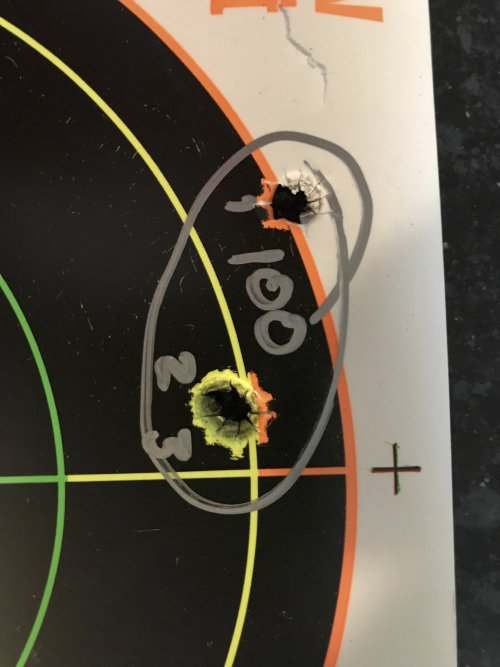David658
Well-known member
Range Report!
Seems I have a shooter, now, I just have to practice.
The bedding and free-floating seems to have solved the accuracy, and the temperature-related stringing. An example group is in the photo. The flyer was a "dammit" as described below.
The groups were bigger than I would expect, because several shots were "dammits", because I now have a 2-1/2# trigger pull, instead of the typical 87# Ruger pull. Will get a snap cap tomorrow at Sportsman's, and do some dry firing so I can get more accustomed to the pull - no need to launch lead to get used to that pull.
Pleased at this point, and I like the Winchester poly-tipped 150gr ammo - if I can locate more, that might just be my Ibex ammo. Big "if".
Seems I have a shooter, now, I just have to practice.
The bedding and free-floating seems to have solved the accuracy, and the temperature-related stringing. An example group is in the photo. The flyer was a "dammit" as described below.
The groups were bigger than I would expect, because several shots were "dammits", because I now have a 2-1/2# trigger pull, instead of the typical 87# Ruger pull. Will get a snap cap tomorrow at Sportsman's, and do some dry firing so I can get more accustomed to the pull - no need to launch lead to get used to that pull.
Pleased at this point, and I like the Winchester poly-tipped 150gr ammo - if I can locate more, that might just be my Ibex ammo. Big "if".





